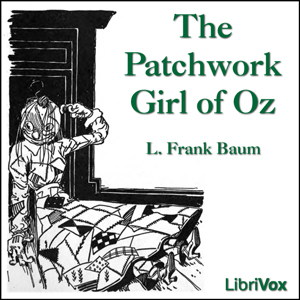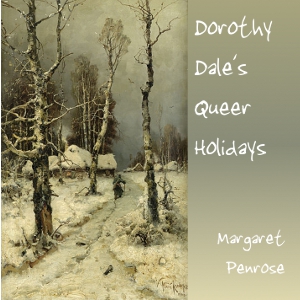- How Phidias Helped the Image-Maker by Beatrice Harraden
- The Fight at the Pass of Thermopylæ by Charlotte M. Yonge
- The Bravery of Regulus Charlotte by M. Yonge
- The Rabbi Who Found the Diadem by Dr. A. S. Isaacs
- How Livia Won the Brooch by Beatrice Harraden
- Julius Cæsar Crossing the Rubicon by Jacob Abbott
- Fearless Saint Genevieve, Patron Saint of Paris Charlotte by M. Yonge
- The Boy Viking—Olaf II of Norway by E. S. Brooks
- The Boy-Heroes of Crecy and Poitiers by Treadwell Walden
- The Noble Burghers of Calais by Charlotte M. Yonge
- The Story of Joan of Arc, the Maid Who Saved France by Anonymous
- How Joan the Maid Took Largess from the English by Anonymous
- Death of Joan the Maid by Anonymous
- How Catherine Douglas Tried to Save King James of Scotland by Charlotte M. Yonge
- The Brave Queen of Hungary by Charlotte M. Yonge
- The Story of Christopher Columbus for Little Children by Elizabeth Harrison
- A Sea-Fight in the Time of Queen Bess by Charles Kingsley
- A Brave Scottish Chief by Anonymous
- The Adventure of Grizel Cochrane by Arthur Quiller-Couch
- The Sunken Treasure by Nathaniel Hawthorne
- The Lost Exiles of Texas by Arthur Oilman
- The Boy Conqueror—Charles XII of Sweden by E. S. Brooks
- The True Story of a Kidnapped Boy as Told by Himself Peter Williamson
- The Prisoner Who Would Not Stay in Prison by Anonymous
- A White Boy Among the Indians, as Told by Himself John Tanner
- Evangeline of Acadia by Henry W. Longfellow
- Jabez Rockwell's Powder-Horn by Ralph D. Paine
- A Man Who Coveted Washington's Shoes by Frank R. Stockton.
- A Famous Fight Between an English and a French Frigate by Rev. W. H. Fitchett
- The Trick of an Indian Spy by Arthur Quiller-Couch
- The Man in the "Auger Hole" by Frank R. Stockton.
- The Remarkable Voyage of the Bounty by Anonymous
- The Two Boy Hostages at the Siege of Seringapatam by Anonymous
- The Man Who Spoiled Napoleon's "Destiny" by Rev. W. H. Fitchett
- A Fire-Fighter's Rescue from the Flames by Arthur Quiller-Couch
- How Napoleon Rewarded His Men by Baron de Marbot
- A Rescue from Shipwreck by Arthur Quiller-Couch
- Rebecca the Drummer by Charles Barnard
- The Messenger by M. E. M. Davis
- Humphry Davy and the Safety-Lamp by George C. Towle
- Kit Carson's Duel by Emerson Hough
- The Story of Grace Darling by Anonymous
- The Struggles of Charles Goodyear by George C. Towle
- Old Johnny Appleseed by Elizabeth Harrison
- The Little Post-Boy by Bayard Taylor
- How June Found Massa Linkum by Elizabeth S. Phelps
- The Story of a Forest Fire by Raymond S. Spears
The stories in this volume are true stories, and have been arranged in chronological order, an arrangement that will aid the reader to remember the times to which the stories relate.
Almost any encyclopedia can be consulted for general details of the life stories of the interesting people whose names crowd the volume except perhaps in the cases of Peter Williamson and John Tanner, "The True Story of a Kidnapped Boy," and "A White Boy Among the Indians." Peter Williamson was kidnapped in Glasgow, Scotland, when he was eight years old, was captured by the Cherokee Indians in 1745, and (though the story does not tell this) he returned to England and became a prominent citizen. He first made the British Government pay damages for his kidnapping, gave the first exhibition in England of Indian war dances, and was the first Englishman to publish a street directory. He was finally pensioned by the Government for his services in establishing a penny post.
John Tanner, the son of a clergyman, was stolen by the Indians some years later. His mother died when he was very young, his father treated him harshly, and so when the Indians kidnapped him he made no effort to escape. John remained among them until he was an old man, and the story of his life, which he was obliged to dictate to others as he could neither read nor write, was first published about 1830. The stories of these boys are considered to be two of the most reliable early accounts we possess of life among the Indians. - Summary by the author
Almost any encyclopedia can be consulted for general details of the life stories of the interesting people whose names crowd the volume except perhaps in the cases of Peter Williamson and John Tanner, "The True Story of a Kidnapped Boy," and "A White Boy Among the Indians." Peter Williamson was kidnapped in Glasgow, Scotland, when he was eight years old, was captured by the Cherokee Indians in 1745, and (though the story does not tell this) he returned to England and became a prominent citizen. He first made the British Government pay damages for his kidnapping, gave the first exhibition in England of Indian war dances, and was the first Englishman to publish a street directory. He was finally pensioned by the Government for his services in establishing a penny post.
John Tanner, the son of a clergyman, was stolen by the Indians some years later. His mother died when he was very young, his father treated him harshly, and so when the Indians kidnapped him he made no effort to escape. John remained among them until he was an old man, and the story of his life, which he was obliged to dictate to others as he could neither read nor write, was first published about 1830. The stories of these boys are considered to be two of the most reliable early accounts we possess of life among the Indians. - Summary by the author
There are no reviews for this eBook.
There are no comments for this eBook.
You must log in to post a comment.
Log in











